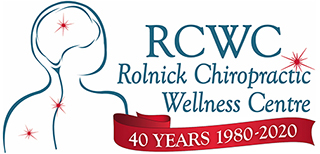Enhance Your Health
Health Tip of the Week: What To Do About Stress
I am sure I am not the only one who has heard this before. Many various unverified sources over the years have told me that people who hold their anger, tension and stress on the inside of their body are heart attacks waiting to happen. And the people who vent (ok, scream and yell) suffer the least from stress born illnesses like heart disease.
While there is no substantiated truth to these statements, it is a known fact that stress, in addition to diet and other unhealthy choices, is a leading factor in heart disease.
Stress is the body's reaction to any change in your life that requires a correction or a response. The body reacts to the change in your life with physical, mental, and emotional responses. Stress is a normal part of life. You can experience stress from your environment, your body, and your thoughts.
Stress is a feeling of emotional or physical tension. It can come from any event or thought that makes you feel frustrated, angry, or nervous. Common effects of negative stress in the body include headaches, digestive issues, sleep disorders, muscle aches and pain, fatigue and chest pain and or palpitations.
Stress reduction techniques are methods people use to help cope with overwhelming stress in the body. Techniques such as meditation, deep breathing and exercise are the most common ways of helping the body calm down and relieve stress.
In addition to these stress reduction methods, there is a new method of stress reduction that ties into my lead in sentence concerning holding in your stress, anger and or frustration. In my effort to help the people who do not have the inborn talent to vent and release their stress, it has come to my attention that screaming is a very good stress and tension releaser.
I don't mean screaming at another person (even though that can feel good). I mean screaming or yelling at the top of your lungs in private. The screaming releases a lot of pent up stress and anxiety and the oxygen used screaming leads to a post scream, euphoric calm. If you embarrass easily and don't want anyone to hear you, scream into a pillow.
While screaming may be good for relieving stress, it is not for everyone. If you have a health condition that screaming could affect, don't do it. For everyone else, just shout it out! AAAAAAAAAARRRRRRRRRRRGGGGGGGGHHHHHHHH!!!!!!
Thought for the Week
I think I've discovered the secret of life - you just hang around until you get used to it. ~ Charles Schulz
Chiropractic Thought for the Week
Tie a rope around your waist. Give the other end to a friend and have him or her pull on it. The odds are that the taught rope will move your body and pull you out of your standing still position. When a muscle undergoes stress or suffers an injury, the muscle tightens up and pulls taught. The spinal muscles are attached to your body's moveable spinal bones.
When a spinal muscle goes taught from stress or injury, it pulls the spinal bone out of position causing a subluxated vertebra. You then get an ache or pain. Over time the muscle will adapt to the wrong position of the bone and there no longer will be pain. The area just becomes weaker and more unstable until your body is ready to give you a much bigger pain.
Chiropractic adjustments correct the spinal bone position and relax the muscle tension.
Pregnancy News
A study performed by the American Medical Association found that women who were seen by an obstetrically trained chiropractor and had pregnancy specific chiropractic care during their third trimester of pregnancy were more comfortable and had less discomfort during delivery. In addition, the need for painkillers during labor was also reduced by half in several patients.
According to the American Pregnancy Association, there are no known contraindications to chiropractic care throughout pregnancy. The American Pregnancy Association goes on to list specific benefits of chiropractic care during pregnancy.
These benefits include:
- Maintaining a healthier pregnancy
- Controlling symptoms of nausea
- Reducing the time of labor and delivery
- Relieving back, neck or joint pain
- Preventing a potential cesarean delivery
In addition, obstetrically trained chiropractors balance the pelvis and relax the supported abdominal ligaments that hold and support the uterus and baby, reducing uterine constraint.

